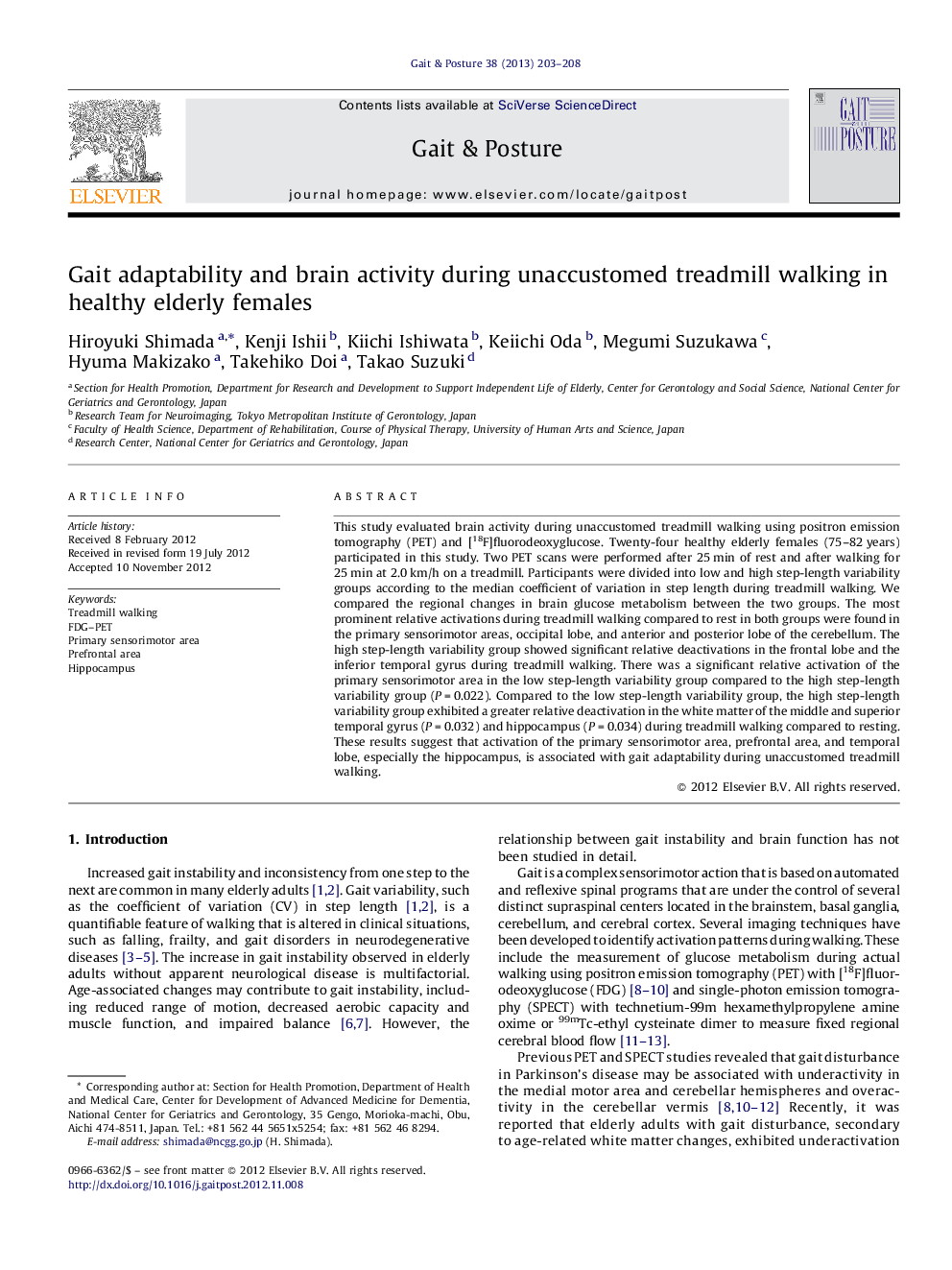| Article ID | Journal | Published Year | Pages | File Type |
|---|---|---|---|---|
| 6207318 | Gait & Posture | 2013 | 6 Pages |
This study evaluated brain activity during unaccustomed treadmill walking using positron emission tomography (PET) and [18F]fluorodeoxyglucose. Twenty-four healthy elderly females (75-82Â years) participated in this study. Two PET scans were performed after 25Â min of rest and after walking for 25Â min at 2.0Â km/h on a treadmill. Participants were divided into low and high step-length variability groups according to the median coefficient of variation in step length during treadmill walking. We compared the regional changes in brain glucose metabolism between the two groups. The most prominent relative activations during treadmill walking compared to rest in both groups were found in the primary sensorimotor areas, occipital lobe, and anterior and posterior lobe of the cerebellum. The high step-length variability group showed significant relative deactivations in the frontal lobe and the inferior temporal gyrus during treadmill walking. There was a significant relative activation of the primary sensorimotor area in the low step-length variability group compared to the high step-length variability group (PÂ =Â 0.022). Compared to the low step-length variability group, the high step-length variability group exhibited a greater relative deactivation in the white matter of the middle and superior temporal gyrus (PÂ =Â 0.032) and hippocampus (PÂ =Â 0.034) during treadmill walking compared to resting. These results suggest that activation of the primary sensorimotor area, prefrontal area, and temporal lobe, especially the hippocampus, is associated with gait adaptability during unaccustomed treadmill walking.
⺠Treadmill walking increased the cerebral cortex and cerebellum activation. ⺠Step-length variability was associated with brain activation during walking. ⺠High step-length variability group showed relative deactivation in the hippocampus. ⺠Low variability group showed relative activation in the primary sensorimotor area. ⺠These cortical areas may be associated with gait adaptability in the older adults.
